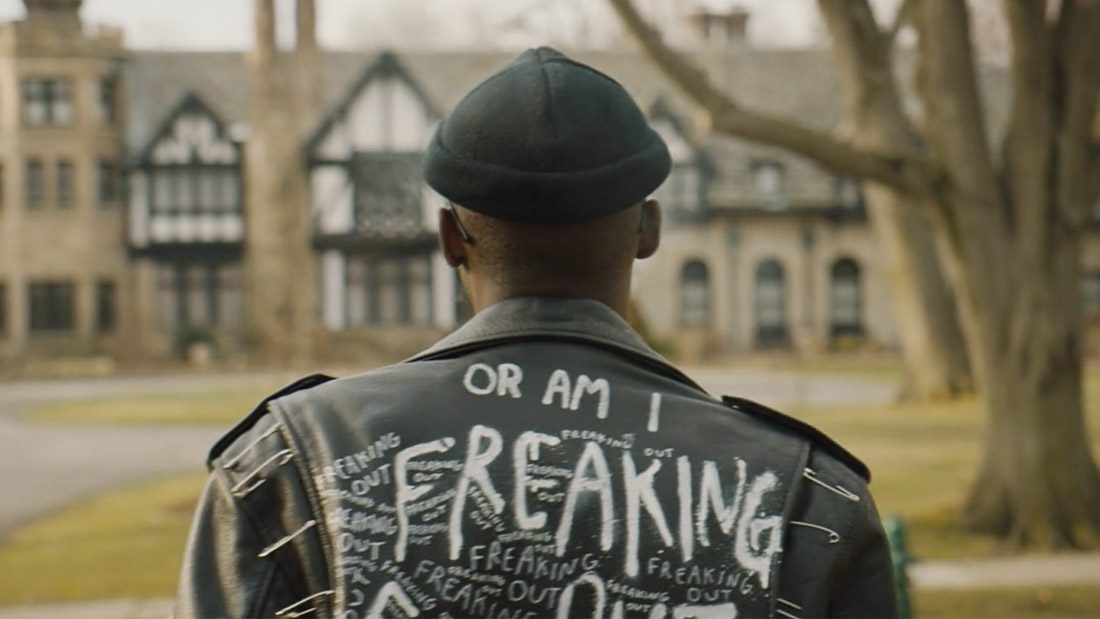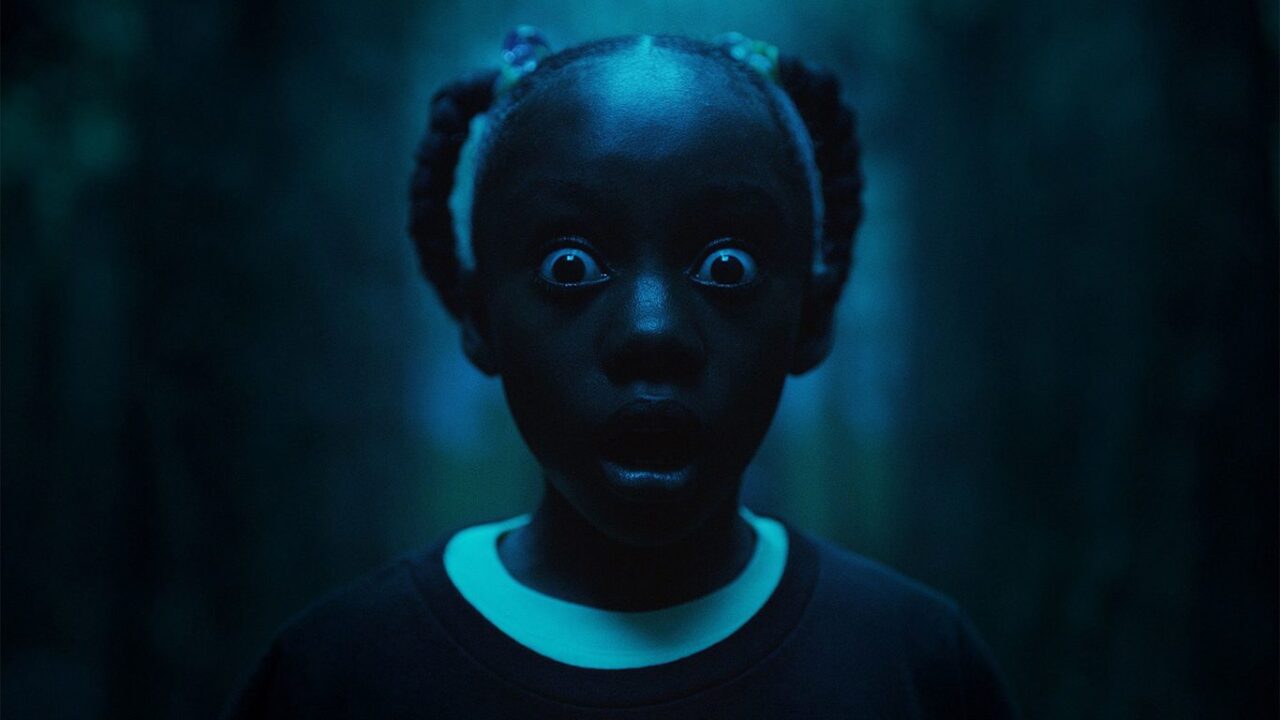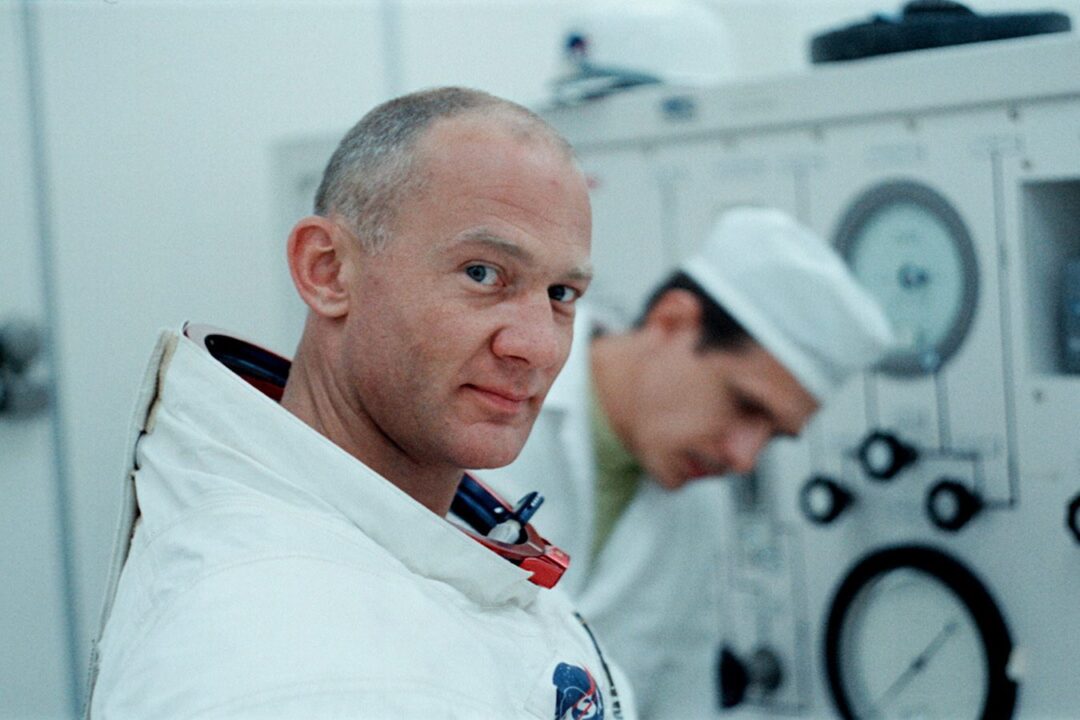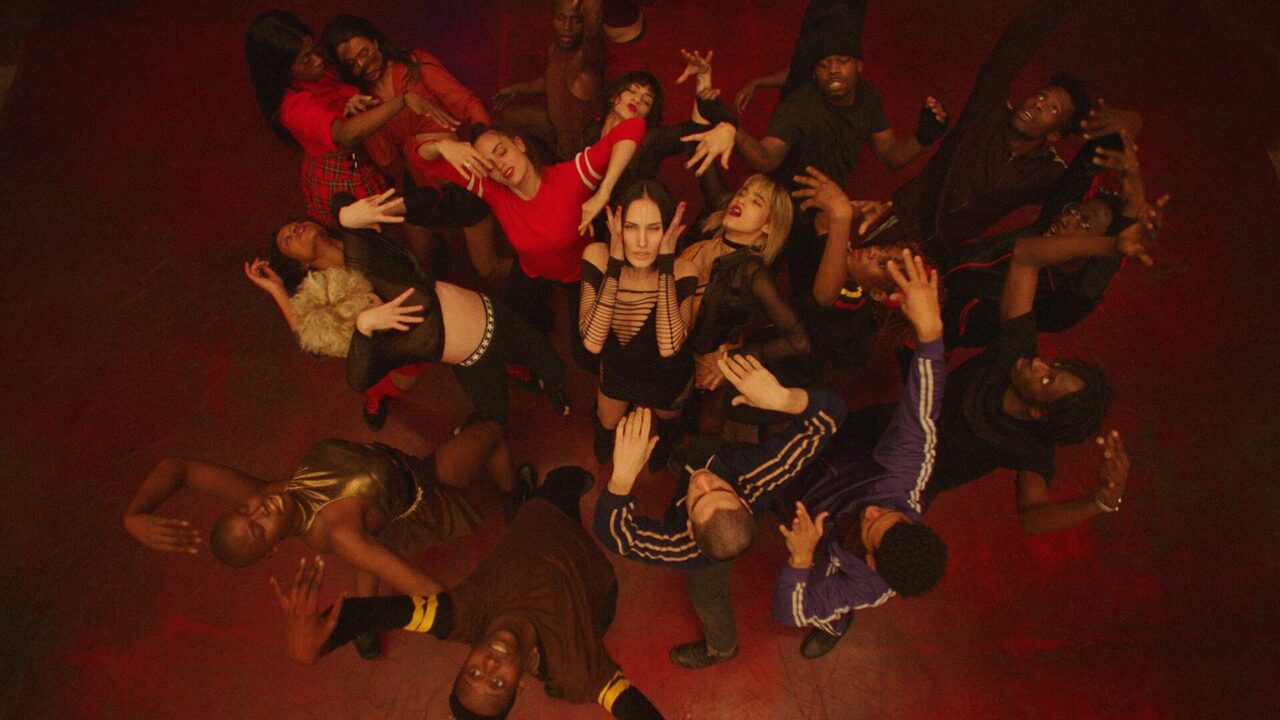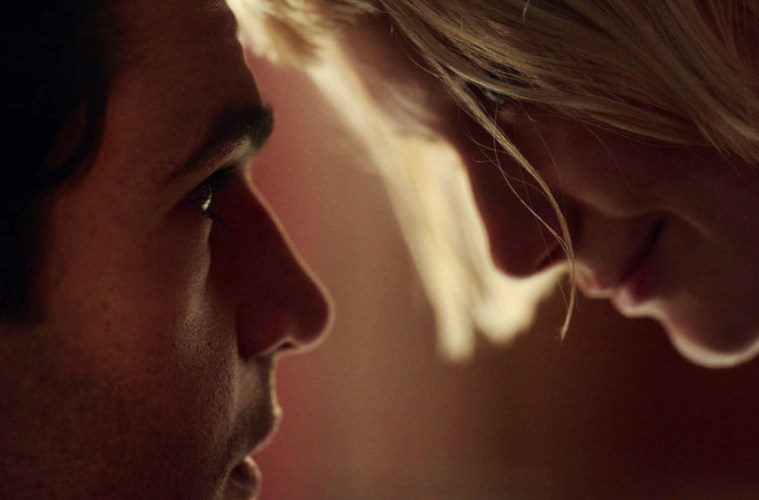In 'Native Son', a Literary Classic gets a Modern, Punk Adaptation
'Native Son' opened this year's Sundance Film festival at the Eccles theater where it played as part of the US Dramatic competition. Upon the end of the film's screening, it received large audience applause in which its director – first-time feature filmmaker Rashid Johnson – and cast – including Ashton Sanders, KiKi Lane, and Nick Robinson were all in attendance. Here's our quick take on what you need to know about the film.
Native Son is the story of a young, low-income African American male who, after securing employment in the world of a wealthy white family, finds himself at the center of an accidental death that puts him in the direct cross-hairs of cultural tensions. Adapted from the classic 1940 novel, first time feature film director Rashid Johnson (along with Pulitzer Prize-winning screenwriter Suzan-Lori Parks) have made this updated version entirely their own: by highlighting the story's underlying social issues and wrapping them up in his polished punk aesthetic, it's a story that feels as timely now as it must have been then.
Visual contemporary artist Rashid Johnson's previous work is in diverse mediums such as painting and sculpting. But with Native Son, his feature film debut, he brings an experienced visual eye to the project, which is the film's most seductive and impactful quality. Where Johnson most noticeably swerves from the source novel, is in the depiction of our protagonist, Bigger (Ashton Sanders), or "Big," as the neighborhood calls him. With his cropped green buzz cut and safety pinned leather jacket, Big is the epitome of visual identity exploded. He challenges both personal and racial expectations of what "blackness" should be by listening to such diverse and non-hip-hop music as Bad Brains and Beethoven. You'll remember Ashton Sanders as teenage Chiron from last year's Best Picture winner Moonlight, and here again, Sanders plays a cryptically reserved character. But as he slinks his way around the streets of North Chicago, he brings a new level of magnetism and menace to his acting range.
Rashid Johnson also succeeds in bringing wonderful talent to the movie: there's KiKi Lane, who most recently gained name recognition by starring in the acclaimed If Beale Street Could Talk, here playing Big's girlfriend Bessie; Nick Robinson plays Jan, as impoverished young activist; and the captivating Margaret Qualley plays Mary Dalton, the alluring daughter of Big's new employer (an always wonderful Bill Camp plays Mr. Dalton). They, along with the rest of the actors in this film, are so perfectly cast together that – to put it in art terms – feels like the right mixture of harmonious colors in Johnson's artistic palette.
It's undeniable that Rashid Johnson is a flourishing visual artist and one who we should all be watching to see what he does next. The biggest obstacle holding Native Son back from being even more impactful is in the jumps in its tonal shifts, which happen when the story plays on and the stakes are raised. The story's pivotal and climactic plot point is surprising, but this hard crank of the wheel feels a bit disorienting. The fallout of this moment leads the movie to make a statement that we didn't know it would have to make. Yet for this slight distraction, it would be wrong to not also acknowledge the number of complex ideas, all stylized through Johnson's artistic formats. It's no wonder why HBO bought the film from A24 hours before the film made its world premiere at the Sundance festival.
'Native Son' will be available to stream on HBO this Saturday.
'Us': An American Nightmare
Last year's Get Out ended up being more than just one of the scariest and wildly original movies of recent times: Jordan Peele's first feature, about a group of African Americans who become enslaved through mind control after getting hypnotized by a family of wealthy Whites, became a pop cultural lightning rod for people to discuss the modern Black experience of living in America and the anxieties felt in Trump-era politics. As Ryan Rojas writes, Peele is back with a film that's even more layered and focused towards expressing a sentiment that gets at the Black experience's earliest historical roots of enslavement to an equally arresting degree (this review is spoiler-free).
For such a stunning achievement of a debut, it's no wonder that audiences have been looking forward to whatever Peele's follow-up film would be with feverish excitement. And now, Peele is back with another suspense thriller – Us – which is equally ambitious in its masterfully layered allegory
It's this duality that makes Us work on two operatic levels: a familiar yet pulse-pounding set-up of a family trying to survive a home invasion, as well as a wildly conceptual existential dread-fest that ties in such gigantic conversations as race in America. When an African American family (a detail that isn't relevant to the story until you think about it symbolically afterward) vacations at their beach house, haunting memories can't help but pop up for Adelaide (Lupita Nyong'o), who remembers an experience she had when she, as a little girl back in 1986, wandered away from her family one night at the boardwalk, only to find herself face to face with another girl – her exact self. It's enough to make for a traumatic childhood that makes her feel not quite herself, and sets the stage for years later when her family becomes the targets of home invaders – frighteningly and inconceivably enough, being each of their actual selves.
A family of four staring back at their exact opposites, they see these attackers all clad in red jumpsuits, brandishing scissors as weapons and noticeably all mute – except for Adelaide's doppelgänger, Red (also played by Nyong'o). From there, it's a story of the family trying to out-live their attackers, who aim to do away with them and take their place in this world. But of course, this being a Jordan Peele story (Peele also wrote and produced the film), the more we learn and the more that's revealed, the audience is only taken deeper and deeper down the rabbit hole of what all ultimately can be seen as an allegory about American history and who we are as Americans, to an uncomfortable yet unflinching degree.
Peele, a previous funnyman whose background on the two iconic sketch shows Mad TV and Key and Peele helped shape him into the brilliant premise inventor that he is, proves more amazingly here that it’s his deep understanding of film history that makes him such a gifted talent (the Hitchcock comparisons have been flying his way as of late). While this review could spend even more time unpacking the visual references that are everywhere in the film and their significance (while still not touching on everything), quite simply put, Us is everything an audience could want in a movie. And one of the best parts is Peele marries his uncompromising vision with the mindset of being big-screen popcorn entertainment, giving Us the opportunity to be seen and discussed by people of all types. And this is what films – the best, paradigm-shifting films – are supposed to do. We should not only escape into something for 100 minutes and return to modern life unchanged, but come back from the experience more learned, or at the very least, willing to confront real-world discomforts. So beyond being one of the most unsettling films of this or any other recent year, Us achieves importance that will be recognized, re-watched, and discussed for years to come.
116 min. 'Us' is rated R for violence/terror, and language. Now playing in theaters.
'Apollo 11' Review: The Moon Landing in Re-Mastered Magnificence
The thing about history is that, if you weren't there to experience it, the power of its story lies in the level of the technology of the times that was able to capture it for future generations to lay witness. As present and future students of history, we will learn some of the most transformative and world-changing moments in human experience through what may be seen as the antiquated technologies of old photographs and bits of film. While these images and sequences may be iconic in their simplicity and singularness, it still leaves the viewer to wonder what else went into that moment. Fortunately, we now live in a time where there is a dedication to historical restoration and education that can amplify and nearly re-create the times – which is what the new documentary Apollo 11 does.
The feat of re-presenting history in a way like never before is what we see in Todd Douglas Miller's documentary Apollo 11. History is re-created through not only the restoration of archival footage – most of which has never been seen before – but also re-mastered for the big screen (unfortunately, by the time this review has come out, Apollo 11 will have ended its IMAX run). The footage, which originally captured this world-changing event in July 1969 and was intended for some yet-to-be-planned project, has been magnificently re-mastered for the big screen in a way that is entirely mind-blowing.
Beyond seeing this archival footage – starting from the days spent prepping the launch at Cape Canaveral and leading up to the history-making shuttle launch attended by thousands of people surrounding the site – is Apollo 11's captivating editing. The reason why the film is so gripping is that it's edited to feel as suspenseful as a Hollywood movie, something more than just a documentary composed solely of historical footage. Seeing inside NASA's command centers and the antiquated technologies and huge computers that communicated with the astronauts in space – Neil Armstrong, Buzz Aldrin, and Michael Collins – feels more like a time machine than a space shuttle. Seeing each of the different – and many – coordinated shuttle launches and dockings to land on the moon, and then finally home, all come together in a magnificent way. It's no wonder why Apollo 11 won the editing prize at Sundance this year.
Apollo 11 is an insurmountably captivating viewing experience. While history can feel so abstract and unreal, it goes to show the unbelievable risk and achievement that was landing on the moon. We all have an idea of the moon landing in our minds – to a millennial like me, it is the photo of Neil Armstrong standing next to the American flag on the deserted moon. Hopefully for others, watching Apollo 11 will inspire more to look up in the sky and take awe, which is what all movies can hope to set out to do.
Apollo 11 is rated G. 93 minutes. Now playing at ArcLight Theaters.
'Climax' is a Demonic Freak Out on the Dance Floor
While the expressive movement of dance is quite a transportive and personal release, a night out at the club is still just sweaty gyrating.
While the ego is taking a momentary back seat during the simulation of possession through musical pulsations, you're not losing all control, no matter how much you might hope to be- because losing all control would be utterly terrifying. Yet for director Gaspar Noé, losing all control, and seeing what depths of human depravity one succumbs to in those moments of pure helplessness, is exactly what he's most fascinated in putting on the big screen.
It's club-gone-crazy in Climax, Noé's latest psychotic head explosion of a film. Following a troupe of dancers on their last night before leaving France for America to embark on a tour, these young dancers – each with their own personal histories between each other – take to cutting loose, and unknowingly getting drugged by an unattended sangria bowl. It's an eventual acid-laced mental unraveling, built-in slow, sinful sensation, and all soundtracked to the fuzzy deep bass waves vibrating through the walls (Justice and Daft Punk among the cuts). Pulsations of pleasure turn inescapable and horrific, turning everyone (including Sofia Boutella) into their most helpless, animalistic and amoral selves, making for a haunted house experience on a demonic dance floor.
If it wasn't known before, Climax is not rated, which is something you should absolutely know before going into it. While watching any Gaspar Noé film (he's also the mind behind Enter the Void) can be a torturous event, it's also the rare, unflinching look at what can best be seen as an exploration of human behavior. Sex, drugs, and graphic violence (and sometimes all three at the same time) are heightened to their most extreme, pushing one over their rational senses to helplessness and depravity. While Noé's last film, Love, shocked audiences, it did so with its sentimentality. In Climax, it's a return to devilish form which had my head-spinning from start to finish – when I wasn't trying to watch through my hands.
If you haven't been spooked off just yet (and I certainly hope you haven't), I'd strongly stress that there is so much to love about this movie, and certainly as much to show how skilled a filmmaker Noé is: a compilation of single-cut interviews open the film, followed by a choreographed dance routine (shot in a single take, one of the film's highlights), as well as his trademark neon strobe style title credits. Climax is not for the faint of heart. And it's certainly more than just for music or dance fans, this is for outright risk-takers who want to be utterly disturbed and shocked. It's bass bumping, twisted and dark. And sometimes that's exactly what you're looking for.
CLIMAX (2019)
Starring Sofia Boutella, Romain Guillermic, Souheila Yacoub
Directed by Gaspar Noé
Written by Gaspar Noé
Distributed by A24. 95 minutes. Streaming on Amazon Prime.
https://www.youtube.com/watch?v=Hi69nL_VrTE
Spirit Awards Honor 'If Beale Street Could Talk' and the Best of Indie Film
If you regularly follow our coverage, you’ll know that Morgan and I both strive to share with you what we feel are among the most exciting and special films that don’t always find themselves being discussed in the conversation. So with that in mind, we wanted to share with you some of the lesser-known films of 2018 that were honored at a different awards event, one that we covered on the red carpet (check out our site for our video coverage) as well as in the press room.
Taking place the day before the Oscars every year, the Film Independent Spirit Awards celebrate the best of films that are independently produced and made outside of the rigid – and often political – studio system. Despite their countries of origin, budgets, and the talent attached, all of the films recognized at the Spirit Awards have one thing in common: they all embody diversity, innovation, and uniqueness of vision.
And the winners are...
While the Oscars awarded Best Picture to Green Book, the Indie Spirit Awards gave Best Feature to If Beale Street Could Talk, the big-screen adaptation of James Baldwin’s literary classic directed by Barry Jenkins (who was also awarded for Best Director, as well as honored last year for the incredible Moonlight). If you’ve yet to see it, Beale Street was truly one of the most beautiful movies made last year, its level of artistry and emotive resonance will surely leave an imprint on those who seek it out.
Best Male Lead went to Ethan Hawke in First Reformed – and while Hawke, unfortunately, couldn’t attend the event, his performance in the film was committed and definitely one to celebrate. Best Female Lead went to Glenn Close in The Wife, who – while sharing her thanks on the podium and in the press room – brought her dog, Pip, onto the stage, stealing the show. Best Supporting Male went to Richard E. Grant in Can You Ever Forgive Me? and Best Supporting Female went to Regina King in If Beale Street Could Talk.
Other notable awards went to Can You Ever Forgive Me?’s Nicole Holofcener for Best Screenplay, Eighth Grade’s Bo Burnham for Best First Screenplay, and Sorry to Bother You’s Boots Riley for Best First Feature. The Robert Altman Award, which is given to an ensemble cast, director, and casting director of a film considered to be a "maverick" of the year, went to Suspiria, and the John Cassavetes Award went to En El Séptimo Día.
Looking ahead
While the landscape of movies has evolved so much over the past few years, leaving unique films to compete with the latest binge-worthy television show on any number of streaming services, Cinemacy aims to share with you, our readers, interesting films of little-known awareness but are among the top artistic achievements of the year. And with the Film Independent Spirit Awards (and Oscars) now concluded, we set our sights ahead to 2019 and what will no doubt be another exciting year in film.
'Lords of Chaos' Review: The Birth of Black Metal is Bloody and Evil
Lords of Chaos premiered at last year's Sundance Film Festival at – fittingly enough – a midnight screening, which added to the feeling of bewitching and spookiness that overcame the room during the entirety of the night.
From the mind of Jonas Åkerlund
Based on the novel Lords of Chaos: The Bloody Rise of the Satanic Metal Underground by Michael Moynihan and Didrik Søderlind, director Jonas Åkerlund returns to the big screen since his 2002 meth-freakout flick Spun to adapt his long-time passion project. Lords of Chaos tells the real-life story of the birth of the Norwegian band Mayhem who would go on to create a new genre of unrepentant music called "black metal." In its wake, Mayhem also inspired uncontrollable chaos in a wave of death and destruction.
The epic journey of the Norwegian death metal band, Mayhem
Recounting each moment of the band's epic journey in flashback form with apathetic and irreverently hilarious voice-over narration is founding Mayhem band member Euronymous (Rory Culkin). He recounts the band's rise from jamming out in basements with fellow bandmates Hellhammer (Anthony De La Torre) and Necrobutcher (Jonathan Barnwell), to finding their first lead singer – "Dead" is his self-given name (Jack Kilmer), and through the rise of their popularity in the underground music scene. While the structure of the movie might fit in line with any Behind the Music dramatization, the choppy and chaotically-minded camerawork and editing is anything but conventional and feels like you're sitting next to an amp with the distortion turned all the way up.
Deadly serious events told through twisted humor
While the events depicted in the film are deadly serious – emphasis on death – Director Jonas Åkerlund injects a level of sick, twisted humor to the movie that conjures a fitting "devil-may-care" attitude that the band so carelessly oozes. When you hear the kids say things like "Hail Satan" to each other, it's delivered with the faintest humor that alludes to show what a ridiculous gesture it is. That is, until Euronymous, the image-minded bandleader whose own satanic-worshiping exterior might be more of a front than the real deal, realizes he's inspired an untamable follower to his and the band's anarchic message – that of former-fan-turned-new-bandmate Varg (Emory Cohen). Varg's enthusiasm for Mayhem and his anti-establishment message would eventually force Euronymous to practice what he preached, all but forcing his hand to perform church burnings and more. Åkerlund, a former drummer in the 80s for the Swedish hardcore metal band Bathory as well as seasoned music video director for such acts as Lady Gaga and U2, understands the reflexive relationship between art's authenticity and its marketing and therefore knows exactly how to deliver on this struggle in the film's final act.
Culkin and Cohen are absolutely fearless
Lords of Chaos is truly an ensemble film, with equally compelling and memorable performances from supporting actors Valter Skarsgård, Lucian Charles Collier, Wilson Gonzalez, and Sky Ferreira. But it's the film's leads who are given the heaviest emotional crosses to carry, and Culkin and Cohen are absolutely fearless in these roles, both as mesmerizing as they are terrifying. Lords of Chaos is that kind of movie that's so brutal that it might make you physically sick to look at – and yet you won't be able to stop watching it through your fingers. But make no mistake – bringing this level of chaos to the big screen is still exceptionally made filmmaking. To make a movie like this – one that doesn't shy away from actual events no matter how horrific or indigestible – takes a brave team, and Åkerlund, Culkin, Cohen, and the rest of the cast prove that they are more than game to bring this story of grisly death to glorious life.
This review originally ran on February 1, 2018, during the Sundance Film Festival
'Lords of Chaos' is rated R for strong brutal violence, disturbing behavior, grisly images, strong sexuality, nudity, and pervasive language. Opening this Friday at Laemmle theaters.
'Piercing' Review: Indulging Evil Urges
It would be untrue to say that we're all without secret urges that no one ever knows.
In the sadomasochistic black comedy Piercing, these perverse urges take the form of luring and killing prostitutes. Dark in premise, Piercing takes this concept and runs it through a zany and off-the-wall lens- where absurdity and extremity collide and create a hilariously wacky affair. Note: I watched this film at the midnight screening of AFI Fest, which is more or less the exact viewing conditions in which to see this film.
For all of Piercing's wild ideas, it's a relatively contained film. Credit that to the film taking place almost entirely in a single hotel room. In addition to its location is the intimate casting which consists of two of the art-house world's most alluring and attractive young talents. Christopher Abbott and Mia Wasikowska star as the man with a secret fetish for killing call-girls and the unsuspecting blonde who is called to meet him.
...There are moments of gross-out shock pop up in the film, but if you're in for a devilishly delicious time then 'Piercing' will certainly not disappoint.
Reed (Abbott), pardoning himself from his wife (Laia Costa) and baby for a weekend of "business," takes up a hotel room (a highly stylized art deco design gives the film an out-of-time quality), whereupon he mimes his soon-to-be actions with serial killer precision. The dry humor of which sets up the comedic tone early on. The arrival of Jackie (Wasikowska), then, should be one that Reed knows how to handle and execute, but as Reed quickly finds, she comes with quirky and then kooky variables that soon force Reed to go off-script. And before he or we know it, we're unsure who's the cat and who's the mouse in this perverse game of pleasure and power dynamics.
Based off of the novel of the same name by Ryû Murakami, Piercing is directed by Nicolas Pesce, who brings a wealth of visual homages to the film (particularly the 70s slasher films of the Argento variety) that makes for an overall fun time – if you don't mind the mostly dry humor with moments of punctuated shock. Fans of Christopher Abbott will be happy to see that he once again brings total commitment to another off-the-wall project. But the real draw here is Wasikowska, who plays totally off type as a ditsy and then commanding blonde who flips the script on us all. You have been warned, though, there are moments of gross-out shock pop up in the film, but if you're in for a devilishly delicious time then Piercing will certainly not disappoint.
81 min. 'Piercing' is rated R for aberrant violent and sexual content, nudity, and language.
'Velvet Buzzsaw' is a Campy Horror Satire of the Art World
‘Velvet Buzzsaw' made its world premiere at the Sundance Film Festival, along with the film's director – Dan Gilroy – and stars, Jake Gyllenhaal, Natalia Dyer, and more. The film is a wicked, hilarious satire with palpable energy – but did it live up to the audience’s expectations after Gilroy's and Gyllenhaal's last pairing, the heart-racing and maniacal 'Nightcrawler'? Here's what you need to know about this film.
High-end art world horror
The term "velvet buzzsaw," for those who don't know, is slang for a rich person's flatulence, and it's this stuffy, hot air that writer-director Dan Gilroy derides so deliciously in his new film, the horror-comedy Velvet Buzzsaw (available to stream on Netflix this Friday). Having last mocked the vulture-like culture of tabloid journalism and consumption in his previous film, Nightcrawler, Gilroy returns to an arena of ridicule (and once again set in the beautiful but artificial city of LA) to satirize the self-important art world elites whose vanity and greed results in devaluing the meaning of art – if it doesn't kill them first.
Killer paintings!
It's business as usual in the art world – with vanity plagued art dealers, buyers, agents, and critics all "kiss-kiss"ing each other at the latest openings. That is, until the life's work of an unknown artist is discovered, which shakes the art world for the mind-blowing reason that it actually has "substance" as flamboyant art critic Morf Vandewalt (Jake Gyllenhaal) remarks. Whether or not the paintings from the artist – Dease – should ever have seen the light of day or not (per the late artist's intentions) means nothing to sales agent Josephina (Zawe Ashton) and her boss, Rhodora Haze (Rene Russo), who immediately look to sell and display the white-hot works. But as they, and the rest of the vociferous art world soon comes to find as each of the pieces are dealt and displayed, spiritual forces begin to haunt and lead each of the greedy superficial socialites to their demise in different gruesome ways.
A dream ensemble
Before long, it's one death-by-art after another. One of the most deliciously fun parts of Velvet Buzzsaw is that, being an ensemble movie, we get so many different zany characters, all played by an incredible list of actors all portraying wonderful, over-the-top versions of snobby art world elites who meet a bitter end. There's Rene Russo, who sinks her teeth into the part of Rhodora, former punk rocker turned commercial art owner. Russo mostly plays opposite newcomer Zawe Ashton, who holds her own as Josephina, the agent who discovers the Dease's. Toni Colette is a fantastic wit and energy as the gossipy art world advisor Gretchen, and we are also treated to John Malkovich as an artist looking for re-inspiration. But if there's one person who seems to have the most fun here, it is Jake Gyllenhaal, whose posturing as the flamboyant art critic Morf Vandewalt is a comically caricatured protagonist and a highlight throughout the film.
Painful paintings
Overall, Velvet Buzzsaw is less a breathtaking horror movie and more a perverse, comic watch, which allows Gilroy to have his fun in voicing the underlying thoughts of how art loses all meaning at the hands of elites, critics (ahem) and institutions that seek to focus on financial or social opportunity within its aesthetic value. While this also means that we don't have the same bone-chilling uneasiness of a Nightcrawler, we get something that we can laugh at, and then think about long after.
'Velvet Buzzsaw' will be available to stream on Netflix starting Friday.

